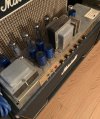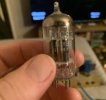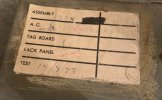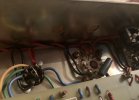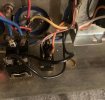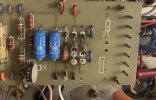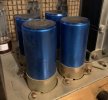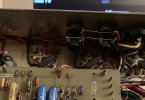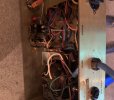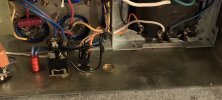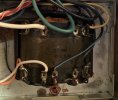TLDR - I thought I bought an American Superlead but it may be a CSA Super Bass
I got bit by the 70s Superlead bug. This one is a little different though. After taking quite a few shots I suspect this was actually a Superbass.
From what I can gather it has a lot of similarities and a few differences than the other.
First from your guys help from my last thread I gather that the original iron is there. Same make, has the same patina and colors as the one I bought last week.
This one has the original Daly caps and I was told it was all original with no holes drilled. But the faceplates were changed at some point? I was in a rush (bad thing to be when buying vintage amps) and didn’t check for the serial number. The back faceplate is a repro and doesn’t have a s/n. And the front is covering up where the Canadian polarity switch would be.
The back has two holes drilled but they seem to match up with where the extra speaker jacks holes would be. I took a lot of pics and would love some insight!
What I think is that I bought a Canadian 73 Superbass someone modded to USA 73 Superlead specs. I didn’t pay 1973 Undrilled Superlead prices so I’m not incredibly pissed but still concerned. I can get a refund if I ask for one, I’m pretty sure.
The assembly tag has the model crossed out. But I know it’s a Canadian made in 73.
Anyways here’s some pics.
The first pic with holes drilled is the front I’m guessing where the polarity would be and the one after with 2 holes drilled is the rear next to the other speaker jacks. Is there a way to verify? I can send more pics if necessary.
I got bit by the 70s Superlead bug. This one is a little different though. After taking quite a few shots I suspect this was actually a Superbass.
From what I can gather it has a lot of similarities and a few differences than the other.
First from your guys help from my last thread I gather that the original iron is there. Same make, has the same patina and colors as the one I bought last week.
This one has the original Daly caps and I was told it was all original with no holes drilled. But the faceplates were changed at some point? I was in a rush (bad thing to be when buying vintage amps) and didn’t check for the serial number. The back faceplate is a repro and doesn’t have a s/n. And the front is covering up where the Canadian polarity switch would be.
The back has two holes drilled but they seem to match up with where the extra speaker jacks holes would be. I took a lot of pics and would love some insight!
What I think is that I bought a Canadian 73 Superbass someone modded to USA 73 Superlead specs. I didn’t pay 1973 Undrilled Superlead prices so I’m not incredibly pissed but still concerned. I can get a refund if I ask for one, I’m pretty sure.
The assembly tag has the model crossed out. But I know it’s a Canadian made in 73.
Anyways here’s some pics.
The first pic with holes drilled is the front I’m guessing where the polarity would be and the one after with 2 holes drilled is the rear next to the other speaker jacks. Is there a way to verify? I can send more pics if necessary.
Attachments
Last edited:

